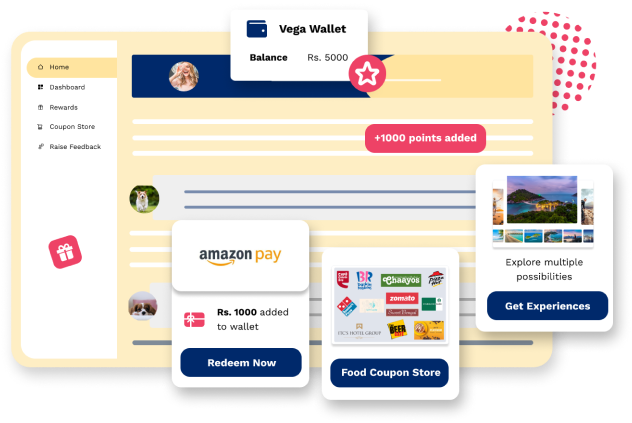Introduction
According to Gallup, an organization with highly engaged workforces outperform their peers by 147%. Gallup also concluded that 87% of employees worldwide are not engaged.

In today's hyper-competitive business environment, how well you engage your employees can make a difference between a healthy, turnover rate or a productive workforce that suffocates your company's growth. When your employees are engaged with their work, they bring their best selves to every project and stick around with your company for a long time. They also spread the word about how your company goes above and beyond to engage its employees, boosting your employer brand and attracting higher-quality candidates over time.
Employee engagement is often utilized to measure satisfaction, which reveals how happy your employees are in their roles and how committed they are to your company's success.
In the current scenario, engagement is no longer just "nice to have" at work—it's something that young generations are demanding from their employers. To help you improve and enhance your employee engagement and get ahead of your competition, here in this blog, we will talk about inevitable Employee engagement KPIs that one should look after. Let's dive in.
Why Is There a Requirement to Measure Employee Engagement?
Measuring employee engagement is essential because it helps organizations understand employees' commitment and investment in their work and the company. Engaged employees are more likely to be innovative and productive and positively impact customer satisfaction and the bottom line. Measuring engagement also helps identify areas where the company can improve its policies, practices, and culture to increase employee satisfaction and retention. Additionally, it helps to identify employees who may be disengaged and at risk of leaving the company. Overall, measuring employee engagement is a critical tool for organizations to use to improve the overall performance and success of the company.
How do you know if your organization is on the right side of those stats? You are required to start measuring employee engagement KPIs to keep your A Players and reduce employee turnover. This is more than just a function for the human resources department; the best team managers measure employee engagement KPIs on their teams.
Luckily, there are several ways to quantify employee engagement KPIs (Key Performance Indicators) and track them over time. Here's where to get started in 2023.
Top Employee Engagement KPIs for 2023 and Beyond
1. Employee Net Promoter Score (eNPS)
This is one of the crucial KPIs. The standardized method for tracking the effectiveness of an organization's culture is the Employee Net Promoter Score (eNPS). Some organizations use a survey question about how likely the employee would recommend the company as a place to work. Others also measure how potential the employee is to recommend the company's products or services to friends and family. In both cases, the core of what you're trying to measure is how comfortable your employees are promoting the company to their friends, family, and acquaintances. If employees are willing to do that, they are most likely excited about what they produce and engaged with their work and the company mission. That's a great sign that you're providing a positive employee experience. A bonus of eNPS is that you can measure your results against an industry average.
Here's how you can calculate it:
NPS = (Promoters - Detractors)/ Total Respondents
2. Turnover Rate
The rate of employee turnover gives you an indicator of how many employees have left over the year. This is only sometimes uniform across all teams and departments of the company. By maintaining a steady turnover rate, companies can focus more on specific departments that require attention, especially if employees feel disengaged. The average rate is 10%. If you have a higher rate, look at the reasons for this high rate. The formula utilized to calculate the turnover rate is:
Turnover Rate = ((Total Number of Employees Who Have Left The Company) / ((Number of Employees At The Beginning + Number Of Employees At The End)/2))*100
On average, a company will experience an 18% turnover in its workforce every year. As per market research, the recommended turnover rate is 10% or less annually.
3. Productivity Rate of Employees
The productivity rate of employees is another crucial employee engagement KPI (Key Performance Indicator) as an engaged workforce is typically productive.
Engagement plays an essential role in increasing the productivity rate of an employee. According to Gallup's report, employee engagement shows that organizations with a highly engaged workforce have 21% higher profitability. They also have 17% higher productivity than organizations with a disengaged workforce.
To calculate the employee productivity rate, you can utilize this formula:
Productivity rate of employees = (Total Revenue Of The Company/Total Number Of Employees)*100
4. Absenteeism
Absenteeism could connect to how engaged an employee is with their job role. High absenteeism rates could indicate low morale or a lack of motivation. It can be very complex to determine whether the employee is taking time off for a specific reason or experiencing burnout. To calculate this, take the number of absences in a given time frame, divide it by the time frame value, and multiply by 100 to get the absenteeism rate. When the employees are consistently absent from work, you know they are not engaged enough, affecting productivity and organizational goals.
5. Successful Hires
Recognizing who among your employees was a successful hire can completely reflect employee engagement. There are numerous ways to measure whether an employee was a successful hire, involving the new hire 90-day failure rate, which is the % of employees who leave your company in the first 90 days. You can also look after the average time to fill a job vacancy. This KPI looks at how long it takes from job requisition to accepted offer. Moreover, this number also reflects how efficient your recruiting methodology is, but it also shows how engaged prospective employees are.
Though it's complex to measure, identifying your quality of hire, or the value each hire offers your organization, can give you a granular view of employee engagement. Though there's no gold standard for measuring the quality of employment, job performance and time to productivity are excellent places to start. Engaged employees are more likely to be high performing and productive.
6. Regular Performance Evaluation
The work performance of an employee is a crucial parameter when it comes to evaluating them. This KPI plays a vital role in their development. Feedback provided to the employees at the right time can assist their growth in the correct path. Employee Surveys are an apt way to assess employee performance at regular periods. This feedback not only aids the employee's growth but also indicates that the organization is involved in the development of its employees.
Final Thoughts
If you use employee engagement KPIs to make meaningful improvements, your employees will be more satisfied with their jobs. Happy employees lead to a motivated workforce that is more likely to stick around and go the extra mile to achieve business goals. And for that, Vega HR can help you measure engagement and satisfaction with these critical employee engagement KPIs that give actionable insights into your employees' experience. Vega HR can also assist you in building an effective engagement strategy to get frequent, transparent, feedback from your employees so your organization can always know where you stand with your team. Book a Demo with us today!
About Vega HR
Vega-HR is a powerful tool in the talent war, offering employee rewards, recognition, and pulse recognition. With an engaging platform, it fosters a world-class work culture, providing P2P recognition, social feedback, on-spot recognition, and monetizable incentive solutions with 3000+ coupons in various categories.
Create a Culture People Want to Stick to
- Send rewards
- Give shoutouts
- Build a community
- Gift experiences
Get a demo
 Written by Ali 25 January 2023 | 4 min read
Written by Ali 25 January 2023 | 4 min read




